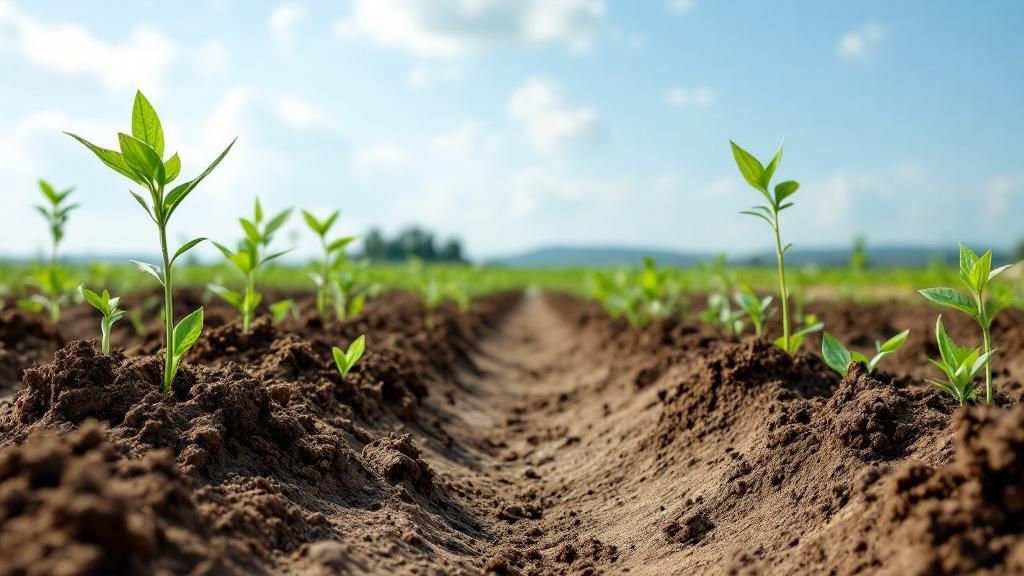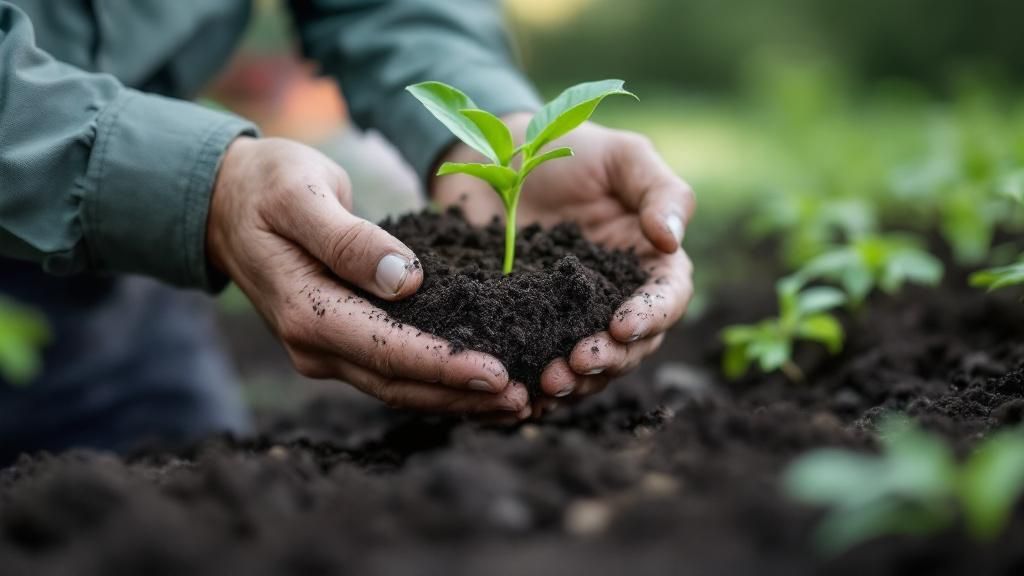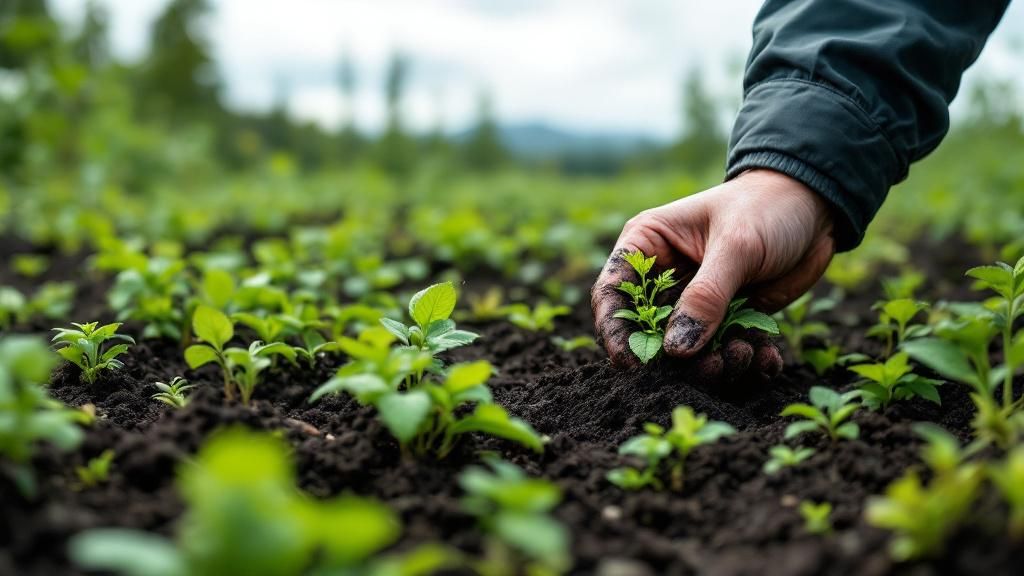
Want Thriving Trees and Shrubs in Anchorage? Start With the Soil
-
Anchorage soil is diverse and often acidic, requiring careful selection of plants and amendments.
-
Soil pH and drainage play critical roles in the success of landscaping projects.
-
Topsoil delivery and preparation are vital steps in improving poor native soils.
-
Native and adapted trees and shrubs thrive when paired with the right soil treatments.
-
Strategic landscaping can overcome common Anchorage soil challenges.
Understanding Anchorage’s soil isn’t just a concern for scientists—it’s essential for anyone aiming to grow healthy trees, design lush landscapes, or establish a lasting outdoor space. The city’s unique location and climate create specific soil conditions that, if misunderstood, can stall even the most well-planned planting efforts.
Anchorage’s Soil at a Glance
Anchorage is built on a patchwork of soil types formed by sand dunes, beach ridges, and glacial deposits. These soils vary greatly in texture, ranging from fine silt loams to extremely gravelly and cobbly coarse sands. The local climate—cool, wet, and prone to freeze-thaw cycles—adds another layer of complexity.
-
Elevation: 0 to 200 feet
-
Precipitation: 15 to 25 inches annually
-
Average Temperature: 33°F to 36°F
-
Soil pH: Can drop as low as 4 (acidic)
This mix of geography and climate means that Anchorage soil often has poor drainage, limited nutrients, and high acidity—conditions that challenge both plant roots and landscaping structures.
The pH Factor: Why Acidity Matters in Anchorage
A pH level below 7 indicates acidic soil. Many areas in Anchorage measure between 4.5 to 6.5, which can limit nutrient availability for trees, shrubs, and grass. Acidic conditions can also inhibit beneficial microorganisms and reduce the effectiveness of fertilizers.
Solutions for Acidic Soils:
-
Lime treatments to raise the pH
-
Incorporating organic matter to boost microbial activity
-
Using pH-tolerant native plants like birch, willow, and alder
Topsoil delivery services often provide screened, pH-balanced mixes that are tailored for Anchorage landscaping needs.

Soil Drainage and Texture: The Root of Many Problems
Anchorage’s gravelly soils may drain too quickly, causing water stress in shallow-rooted plants. In other areas, compacted or poorly graded soils may retain water and suffocate roots. This can be particularly damaging during spring melt or after heavy rain.
Drainage Solutions:
-
Grading and re-sloping to move water away from plant beds
-
Installing subsurface drains or French drains
-
Using raised beds with amended soil for better root zones
Professional landscaping services like those offered by Titan often include site preparation to address these issues before any planting occurs.
Planting Trees and Shrubs in Anchorage: What Works Best?
Choosing the right tree or shrub begins with knowing what your soil can support. Many native species are naturally adapted to Anchorage’s acidic, cold soils. However, even these benefit from proper planting practices and soil conditioning.
Recommended Trees:
-
Alaska Birch (Betula neoalaskana)
-
Tamarack (Larix laricina)
-
Paper Birch (Betula papyrifera)
Recommended Shrubs:
-
Bog Blueberry (Vaccinium uliginosum)
-
Red Osier Dogwood (Cornus sericea)
-
Highbush Cranberry (Viburnum edule)
When planting, it’s important to:
-
Dig a wide, shallow hole to accommodate root spread
-
Backfill with nutrient-rich soil or topsoil blends
-
Mulch to regulate soil temperature and retain moisture
Landscaping That Works with the Soil—Not Against It
Anchorage landscapes benefit from thoughtful planning that respects the existing soil profile. Overloading yards with imported soil can create layers that trap water and stress plant roots.
Instead, integrate soil improvement with landscape design:
-
Amend native soil gradually with compost and aged manure
-
Use hardscaping features like retaining walls to manage elevation changes
-
Include windbreaks of hardy shrubs to shield tender plants from harsh gusts
Titan has helped numerous Anchorage homeowners create functional, beautiful yards by integrating soil conditioning with trees, shrub installation, and full-service landscaping.
Soil Delivery: What to Know Before You Order
When planning a landscaping project, soil delivery might seem like a simple checkbox—but not all topsoil is equal. Look for suppliers that:
-
Test their soil for pH and nutrient content
-
Offer screened or blended options suitable for Anchorage soils
-
Provide consultation or delivery scheduling around weather conditions
A good topsoil delivery sets the foundation—literally—for success in planting and landscaping.
Investing in the Right Foundation
Soil is more than dirt—it’s the base upon which every outdoor project in Anchorage rests. With the city’s naturally acidic, gravel-heavy, and cold-prone soil, residents are wise to approach planting and landscaping with strategy.
Whether you’re refreshing an old garden or starting from scratch, working with a team like Titan ensures your soil is properly evaluated and prepared for success. From planting trees and shrubs to reshaping terrain, professional support can save time and money in the long run.

FAQs
What type of soil is most common in Anchorage?
Soils range from silt loam to extremely gravelly coarse sands, with many areas featuring acidic profiles.
Why is soil pH important?
It affects nutrient availability, microbial activity, and plant health. Most Anchorage soils are too acidic for many non-native plants.
Can I plant directly in native Anchorage soil?
You can, but results improve dramatically when soil is amended with compost, lime (if needed), and topsoil blends.
When is the best time to plant trees or shrubs in Anchorage?
Late spring and early summer, once the ground has thawed, is ideal for planting.